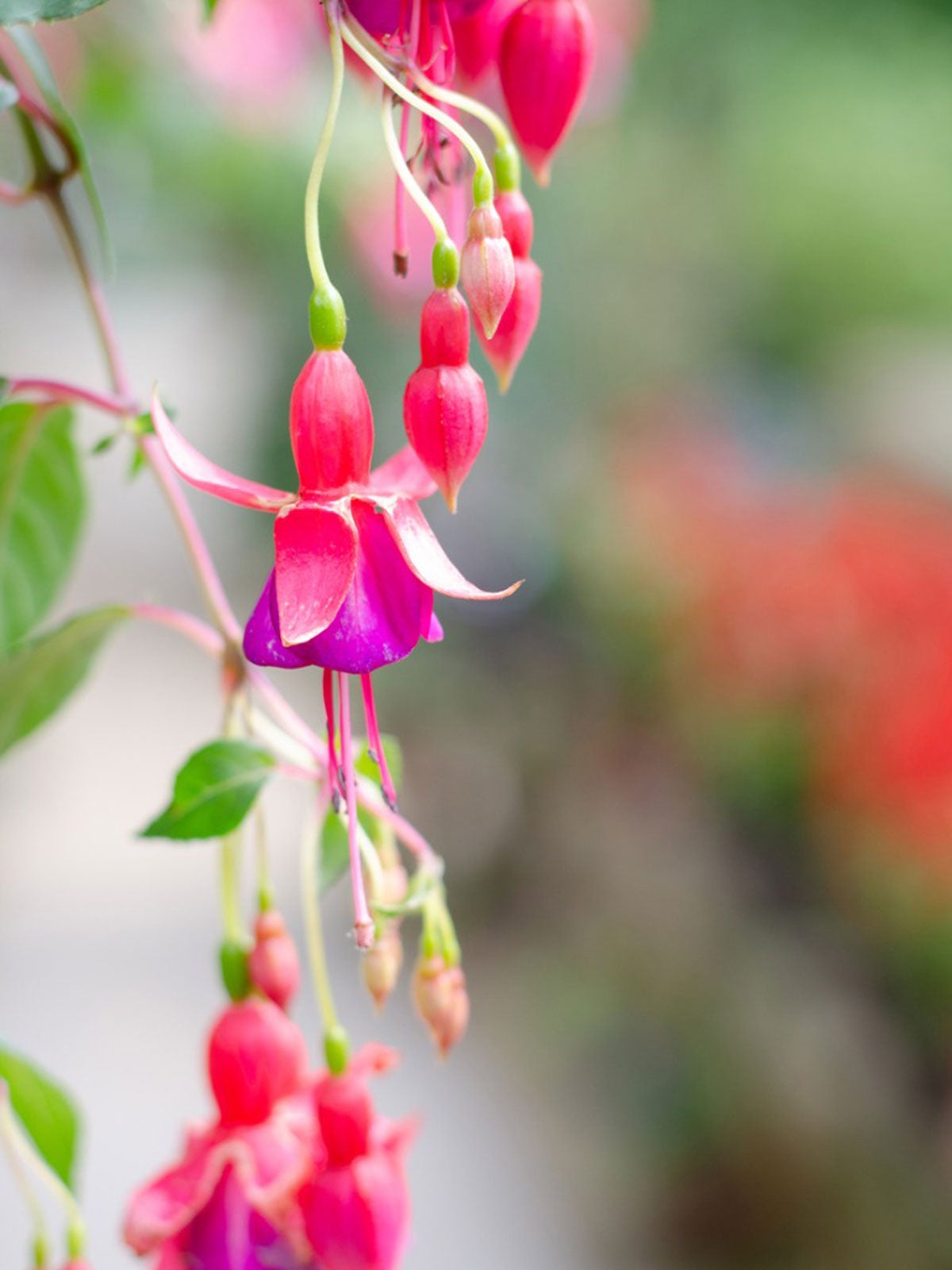Hardy Fuchsia Care – How To Grow Hardy Fuchsia Plants

Lovers of fuchsia must bid the gorgeous blooms farewell as temperatures cool, or do they? Try growing hardy fuchsia plants instead! Native to southern Chile and Argentina, hardy fuchsia is a perennial alternative to the tender annual fuchsia. Read on to learn how to grow and care for hardy fuchsias.
About Hardy Fuchsia Plants
Hardy fuchsia plants (Fuchsia magellanica) are perennial flowering shrubs that are hardy to USDA zone 6-7. They grow from four to ten feet (1-3 m.) in height and three to six feet (1-2 m.) across. The foliage is green, oval, and arranged opposing each other.
The shrub blooms in spring and reliably persists through fall with red and purple dangling blossoms. These plants have naturalized in South America and other mild climatic regions and are so prolific they are now considered an invasive species. Keep this in mind prior to planting and check with your local extension office to ensure it’s okay to plant in your area.
How to Grow Hardy Fuchsia
While hardy fuchsia can be grown as a perennial, this seems to depend on soil drainage. Also, like other fuchsias, hardy fuchsia can’t take the heat so select an area with well-draining soil with partial sun to shade. Lighten the soil up by amending it with compost or other organic matter or plant in a raised bed.
To protect the roots from wet, cold soil when growing, plant two to six inches (15 cm.) deeper than you would normally plant. While planting more deeply than normal will help to ensure the plant’s survival, keep in mind that it will also slow its emergence in the spring.
Hardy Fuchsia Care
During winter the hardy fuchsia plants will die back to soil level with new growth appearing in the spring. Once the plants have died back, refrain from neatening up the landscape by pruning out the dead branches. They will help to protect the crown. Also, in the fall, add a four- to six-inch (10-15 cm.) layer of mulch around the crown of the plants to protect them from winter temperatures.
Caring for hardy fuchsias’ feeding needs is similar to other fuchsia hybrids; all are heavy feeders. Work a slow-release fertilizer into the soil around the root ball at planting time. Established plants should have this same slow-release food scratched into the soil in early spring and again every four to six weeks until midsummer. Stop feeding thereafter to allow them time to harden off before the first frost arrives.
Gardening tips, videos, info and more delivered right to your inbox!
Sign up for the Gardening Know How newsletter today and receive a free copy of our e-book "How to Grow Delicious Tomatoes".

Amy Grant has been gardening for 30 years and writing for 15. A professional chef and caterer, Amy's area of expertise is culinary gardening.
-
 Looking For Plants To Give You The Soft And Fuzzies? Try These 5 Fuzzy Leaf Plant Options
Looking For Plants To Give You The Soft And Fuzzies? Try These 5 Fuzzy Leaf Plant OptionsLovers of texture, drama, silver foliage and tactile plants will adore these special sensory garden additions. These fuzzy leaf plant options will leave you all aglow
By Susan Albert
-
 Get Ready For A Summer Of Hummers! Grow These Full Sun Hummingbird Plants and Flowers
Get Ready For A Summer Of Hummers! Grow These Full Sun Hummingbird Plants and FlowersIf you’re lucky enough to enjoy a sunny backyard, make sure you are maxing out on your pollinator opportunities and grow these full sun hummingbird plants and flowers
By Tonya Barnett